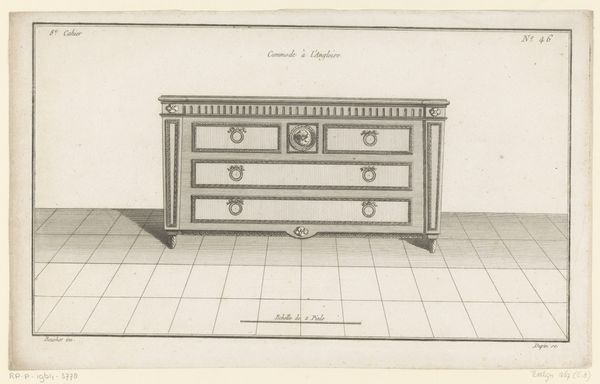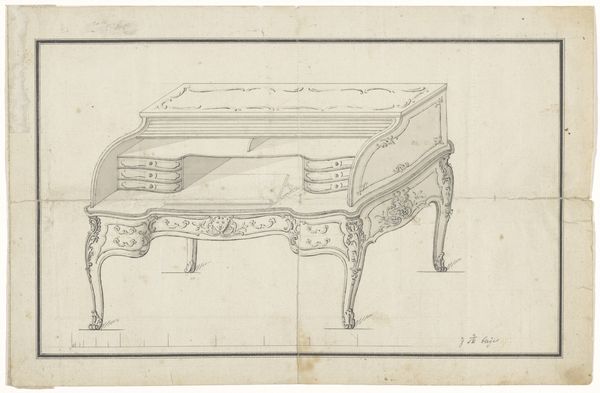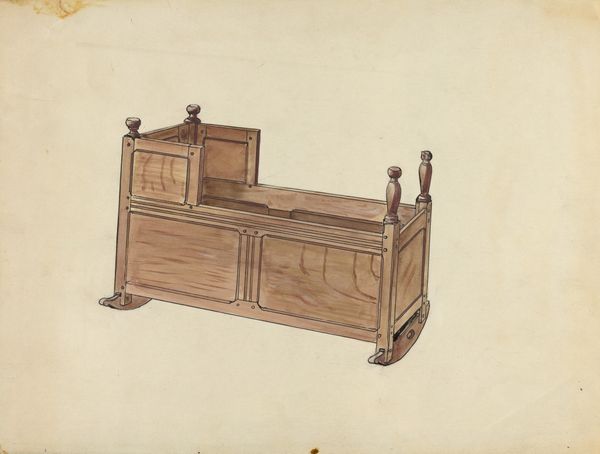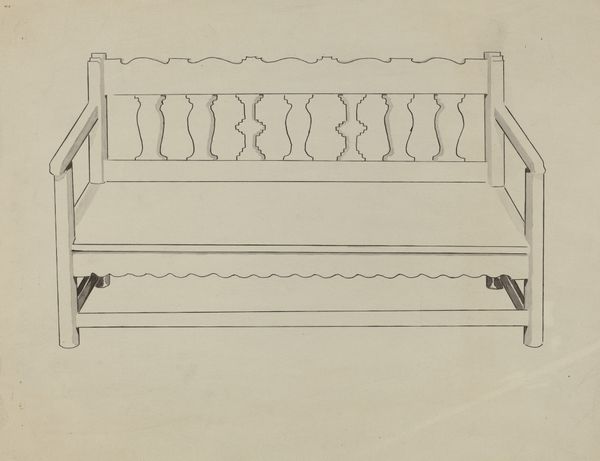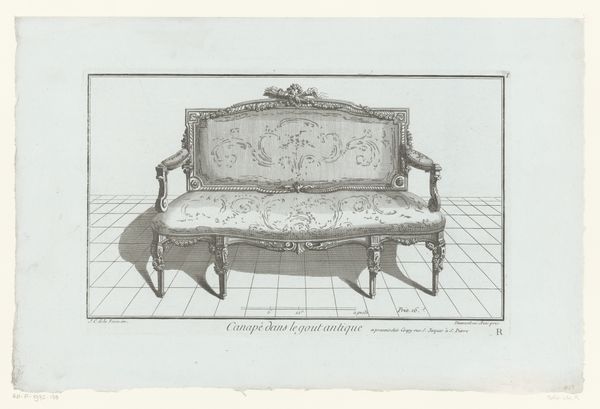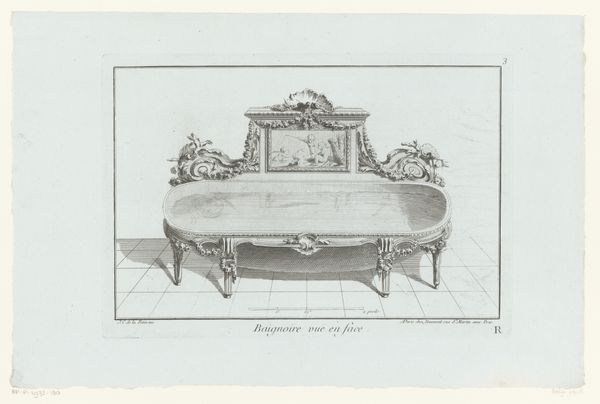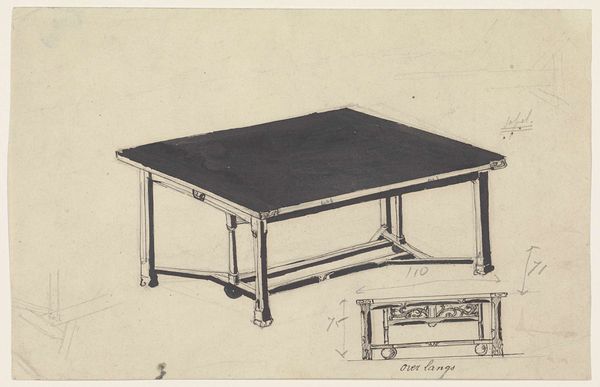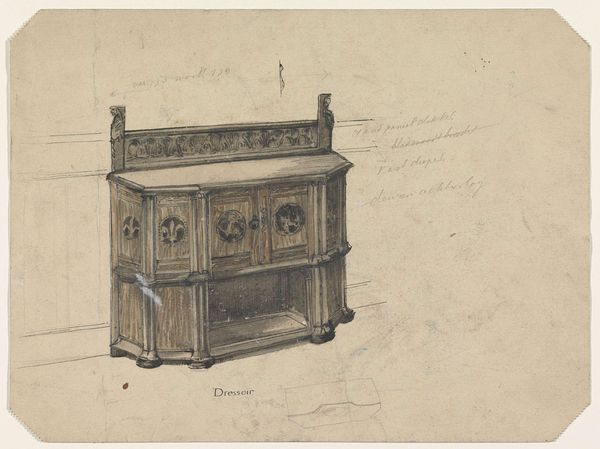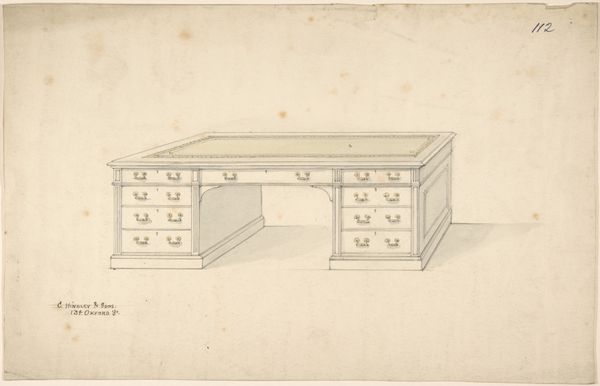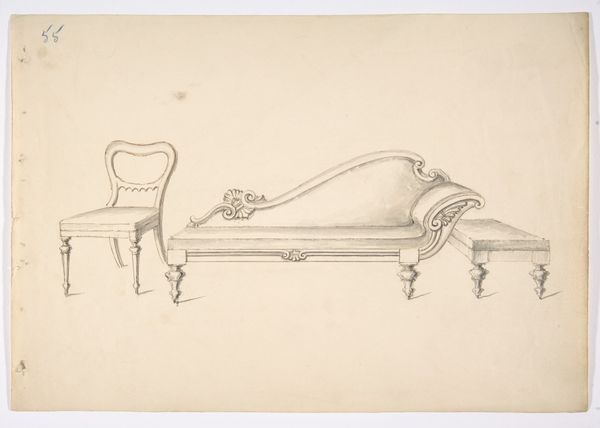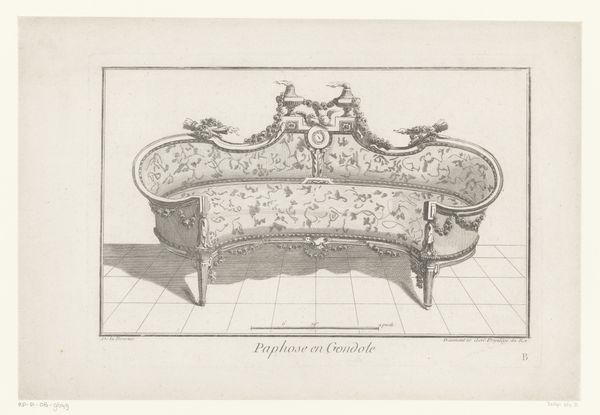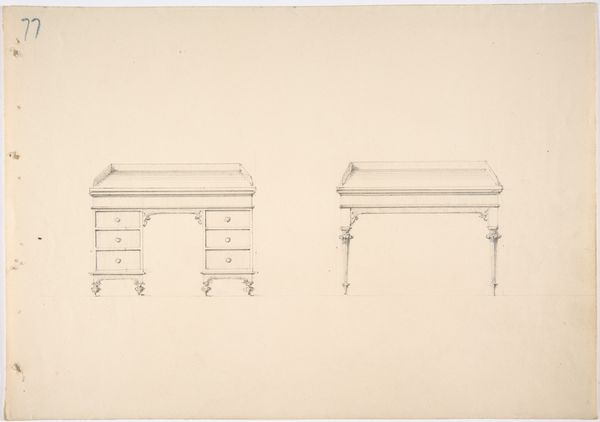
drawing, metal, paper, pencil, wood
#
portrait
#
drawing
#
aged paper
#
toned paper
#
light pencil work
#
metal
#
arts-&-crafts-movement
#
pencil sketch
#
old engraving style
#
sketch book
#
paper
#
form
#
personal sketchbook
#
sketch
#
pencil
#
wood
#
sketchbook drawing
#
pencil work
#
sketchbook art
Dimensions: height 228 mm, width 352 mm
Copyright: Rijks Museum: Open Domain
Curator: This is "Ontwerp voor een ebbenhouten dressoir," a design for an ebony dresser by Carel Adolph Lion Cachet, dating roughly between 1874 and 1945. Editor: My immediate reaction is to its tentative nature, the aged paper hinting at the evolution of design ideas – it feels unfinished yet purposeful. Curator: Absolutely. It’s important to understand that Cachet was deeply involved in the Arts and Crafts movement. This sketch provides a peek into the detailed considerations for how material—likely imported ebony wood and meticulously crafted metal hardware—could converge in functional and decorative form. Editor: That context truly enriches the experience. Looking closer, the sketch raises questions of class and colonialism. Ebony, a prized material, speaks of global trade, likely exploitative labour practices in its harvesting and the display of wealth. How does the dresser function within a domestic space – who has access to its contents, what purpose does it serve, and for whom is it made? Curator: Indeed, the socio-economic dimensions cannot be overlooked. The dresser represents the intersection of design, labor, and consumption. The meticulous detail in the pencil work speaks of skill, yet it begs us to also consider the skilled laborers who would bring this design to fruition. The drawing almost masks all that invisible labor. Editor: Precisely. It reflects the politics embedded in the object’s very existence, it reflects identity and challenges us to dismantle a narrative in which the design, apparently free of any context, obscures an understanding of complex systems of social production, wealth, and distribution. Curator: The Arts and Crafts movement aimed for democratization of art but often catered to a specific class. This design perhaps inadvertently highlights those tensions. We could consider, where was the work produced, and who profited most from this design, should it have been fully materialized? Editor: Examining a sketch like this helps us consider that things are very rarely what they seem and even well-intentioned designs participate in and reflect historical structures of inequity. Curator: By engaging with these questions of material origins and design intent, we reveal a deeper and complex conversation through an apparently simple sketch. Editor: Yes, a poignant reminder that every object is woven into social, political, and material relations.
Comments
No comments
Be the first to comment and join the conversation on the ultimate creative platform.
